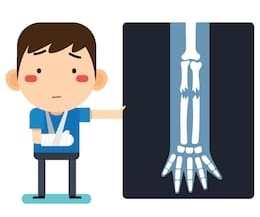Children are not just mini-adults • Higher head to torso ratio: Head injury & Upper C-spine fractures • Light weight – projectile when struck • BSA to Wt. ratio – higher (rapid hypothermia) • Large cardiopulmonary reserves – normal SBP in significant hypovolemia Growth contribution by Proximal & Distal Physes…
Tag: Musculoskeletal system
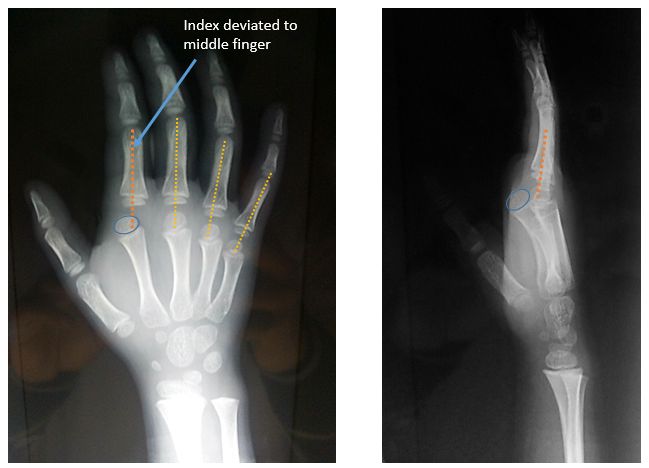
Kaplan’s Lesion : Complex Dorsal MCP joint dislocation
What is Kaplan’s lesion? Metacarpophalangeal (MCP) joint dislocation: Complex (Irreducible) Dorsal Mechanism of injury: Hyperextension injury Involvement: Usually occurs on border digits (Index > Little finger) Characteristic position of index finger: Hyperextended at MCP rests on dorsum of metacarpal Deviated towards middle finger Slightly flexed middle & distal phalanx with…
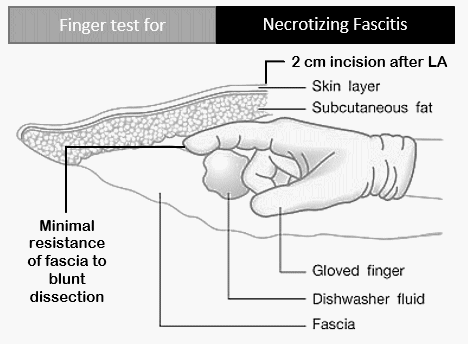
Finger test for Necrotizing Fascitis
Synonyms: Finger sweep test Finger test can be performed under Local anesthesia or General anesthesia in: Emergency department Bedside in wards Operation theaters Procedure: Area is infiltrated with local anesthetic A 2 cm test incision down to fascia is made in the suspected area The tissues are visually examined for:…
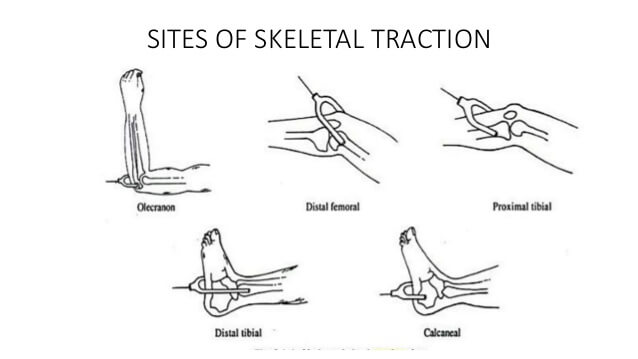
Skeletal Traction – Pin Insertion Sites
Site Point of insertion Direction Indications Olecranon (K-wire) 1.25 inches (3 cm) distal to olecranon tip – deep to subcutaneous border of upper ulna (avoids ulnar joint and open epiphysis) Medial to Lateral – At right angles to longitudinal axis of ulna (Avoids ulnar nerve) Supracondylar or Distal humerus fractures…
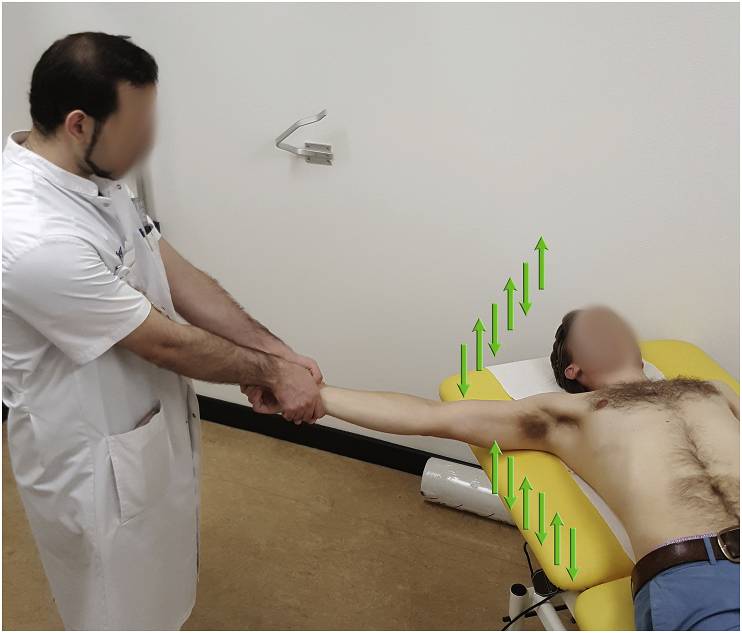
FARES method of Shoulder Reduction
Indication: Anterior shoulder dislocation Position of patient: Supine Position of physician: Standing on the side of the dislocated shoulder Steps: Physician holds the wrist of the patient with both the arms keeping elbow of the patient extended and forearm in neutral position Arm is slowly abducted in brief oscillating movement…
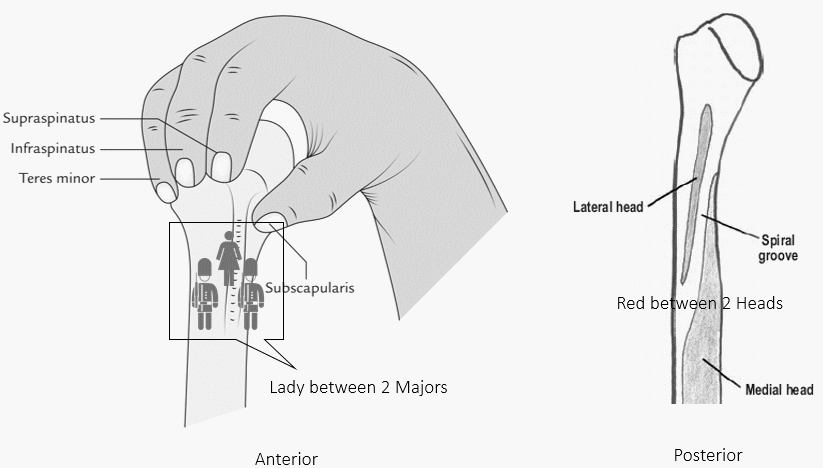
Shoulder Muscles Anatomy – Simplified
Proximal humerus Insertion of Rotato Cuffs Mnemonic: SIT-S a. Greater tubercle: Supraspinatus, Infraspinatus, Teres minor b. Lesser tubercle: Subscapularis Attachment of Other muscles Anteriorly and posteriorly the muscles attach on each side of the depressions (groove and sulcus). a. Anteriorly: Insertion of 3 muscles Mnemonic: Lady between 2 Majors Crest…
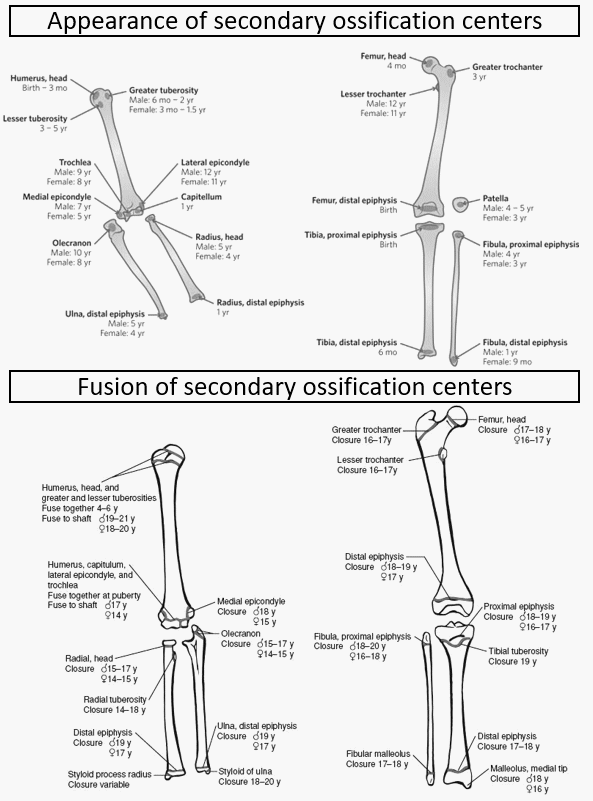
Appearance and Fusion of Ossification Centers
Upper end of humerus Mnemonic: HGL – 1,3,5 a. Head – by 1 year b. Greater tuberosity – by 3 years c. Lesser tuberosity – by 5 years All 3 centers fuse together by 6 years (1 year after the last center appears) Upper end of femur Mnemonic: HGL –…
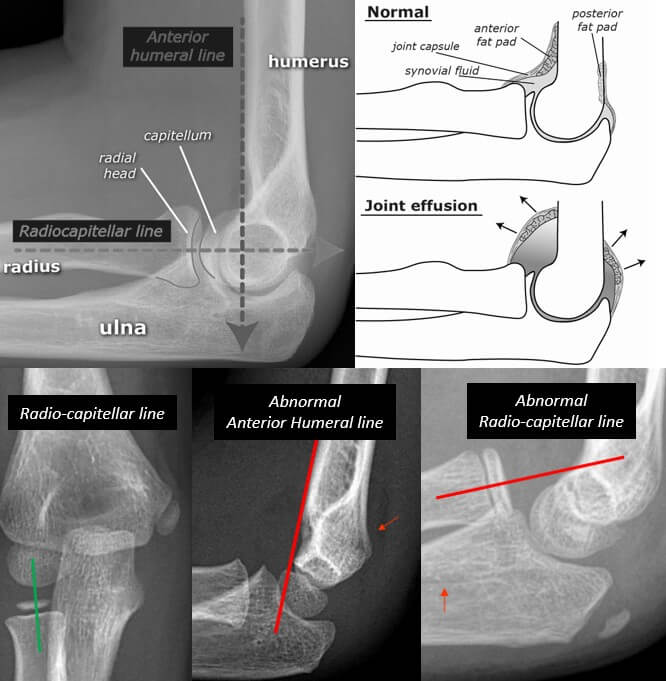
Mnemonic Approach to Elbow Xray – FOOL
Mnemonic: FOOLa. Fat padsb. Overt findings and outlinesc. Ossification centersd. Lines Fat pads The elbow joint has anterior and posterior fat pads which are extra-synovial but within the articular capsule. These are present as a radiolucent (black) line (compared to bone and surrounding soft tissues) in lateral X-rays. Normal finding:…
